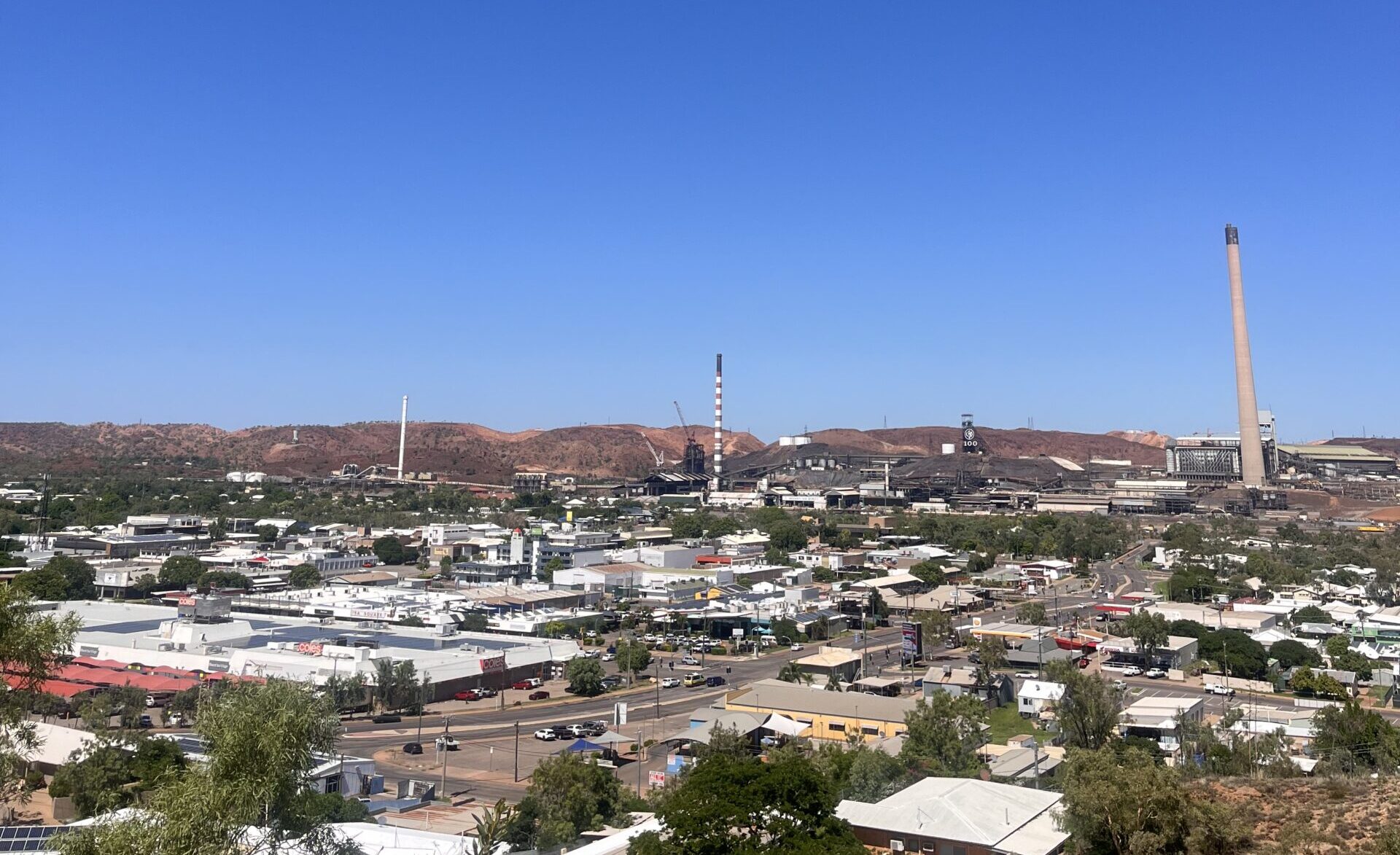In October 2023 Glencore announced that after 60 years of copper mining, the Mount Isa Mines’ underground copper operations (Enterprise, X41 and Black Rock), copper concentrator, and the Lady Loretta zinc mine (140km northwest of Mt Isa) would close in 2025. At the time of the announcement, it was estimated this would directly impact 1200 workers. The most recent figures (March 2024) suggest the direct impact is more likely to fall around 980 workers.
The latest figures put the total population of Mount Isa at 19,047 people and the working age population at 12,998 people. The directly impacted 980 workers make up a significant proportion (about 5%) of the overall population of the town, and an even greater proportion (about 7.5%) of the working population of the town. This closure poses a serious risk to the City of Mount Isa and it is vital that it is treated as such.
In response to Glencore’s announcement, the Mount Isa City Council approached us to help them design a closure response framework. Dr Gemma Beale travelled to Mount Isa in February this year to meet with stakeholders and begin the project.
About Mount Isa
The Mount Isa Mines were first established in 1924 and occupy 33,000 hectares of land, almost the same footprint as the town itself. The front gate of Mount Isa Mines sits one kilometre from the centre of town, separated by a single narrow-gauge train track and a narrow section of the Leichhardt River. The mine occupies an enormous literal and psycho-social space for the residents of Mount Isa.
Employment in Mount Isa is heavily concentrated in the Mining industry. More than one third of people who work in Mount Isa work in this industry. Regions that are highly dependent on a single industry or employer, like Mount Isa, are at greater risk of extended, even generational, periods of unemployment because it is less likely that the available work will require the same skillsets as the industries shedding labour.
No two shocks are the same
Instances of large-scale job loss poses two central and interrelated problems: what happens to the workers and what happens to the region, in the immediate aftermath and over the medium and long term. The loss of a major employer can have individual, regional and national repercussions. Without sufficient and suitable intervention, they can have a devastating and lasting financial and psycho-social effect on workers, their families, and their communities.
No two shocks are the same, and so we must be cautious about any attempts to identically replicate success stories. What worked in one instance will not necessarily do so in another. Closure interventions require a clear understanding of the severity of the problem to inform the level of support needed to mitigate both the direct short-term impacts, as well as the longer-term flow-on impacts which result from a regional shock. Effective management of large-scale job losses require a holistic transition response that simultaneously considers people and place, jobs and skills, and goals and strategies – now and into the future. A successful transition support program requires both early intervention and a long tail.
Overall, the economic impact assessment reveals that for each direct job affected in the Mining industry, an additional job in the town is also impacted. As part of our project we modelled three intervention scenarios: ‘do nothing’, ‘redployment’, and ‘transition’. In the worst-case scenario, an estimated 2,000 jobs are at risk in Mount Isa from the industry closure. Total employment in Mount Isa is about 10,100 people, and the total population is about 19,000. Proportionally, the worst-case scenario would impact 1 in 5 employed Mount Isa residents, and nearly 10% of the population.
Our Findings
We devised a four-part report that sets out a holistic transition framework for Mount Isa’s response strategy, informed by best practices from past industry closures.
Part One: Closure Framework sets out the framework based on best practices from recent closures, and provides an executive summary of the entire project. Part Two: Understand the Regional Context outlines the current and historical status of the labour market in Mount Isa in the context of the closure. Part Three: Map the Threat – Impact Analysis summarises both the direct and indirect impacts on employment and gross regional product impacts from the closure. Finally, Part Four: Identify the Opportunity – Diversification Analysis introduces a method of diversification analysis and applies it for Mount Isa to reveal industrial opportunities based on occupation and industry employment.



SOCIAL SHARE